As work environments continue to evolve, office design must adapt to meet the needs of modern employees. The transition from traditional cubicles to open-plan layouts was initially celebrated for fostering collaboration and transparency. However, in today’s hybrid work era, striking the right balance between private and collaborative spaces has become essential. Offices that successfully blend both can enhance productivity, improve employee satisfaction, and drive business success.
This article explores the importance of balancing private and collaborative spaces in office design and provides insights into creating environments that support both focused work and teamwork.
The Importance of Privacy in the Workplace
While open-plan offices encourage communication, privacy remains a fundamental need for employees. With an increasing demand for deep-focus work and confidential discussions, designated private spaces are crucial.
Benefits of Privacy:
- Enhanced Concentration: Quiet areas allow employees to focus without distractions, improving efficiency and work quality.
- Mental Well-being: Constant noise and interruptions can lead to stress. Providing quiet zones promotes mental clarity and reduces burnout.
- Confidentiality: Private spaces support sensitive conversations, ensuring discretion in meetings and individual tasks.
The Power of Collaboration in the Workplace
Collaboration is the foundation of innovation and problem-solving. Well-designed shared spaces encourage teamwork, creativity, and dynamic communication.
Benefits of Collaboration:
- Increased Creativity: Team interactions facilitate diverse perspectives, leading to innovative solutions.
- Faster Problem-Solving: Collective brainstorming accelerates decision-making and problem resolution.
- Stronger Communication: Regular collaboration fosters team cohesion and improves workplace relationships.
Achieving the Right Balance: Key Design Strategies
Successful office design integrates privacy and collaboration through strategic planning and flexible solutions. Here’s how to create a well-balanced workspace:
1. Zoning for Functionality
Define separate areas for different work styles. Establish quiet zones with phone booths or enclosed rooms for focus work while incorporating open areas for team collaboration. This approach allows employees to choose spaces that align with their tasks.
2. Flexible & Modular Furniture
Invest in adaptable furniture that serves both collaborative and private needs. Movable partitions, adjustable desks, and modular seating arrangements empower employees to customize their workspaces based on their requirements.
3. Acoustic Optimization
Noise control is vital in open-plan offices. Use acoustic panels, soundproof materials, and noise-canceling technologies to minimize disruptions. Incorporating soft elements like carpets and ceiling baffles can help maintain a quiet and comfortable environment.
4. Technology-Enabled Workspaces
Leverage smart office technology to bridge the gap between private and collaborative work. Video conferencing tools, digital whiteboards, and seamless remote access platforms ensure smooth communication across teams, whether in-office or remote.
5. Dedicated Break & Recharge Areas
Designated relaxation spaces allow employees to step away from work, recharge, and foster informal interactions. These areas contribute to overall well-being and encourage spontaneous collaboration.
Designing for Hybrid Work: Flexibility is Key
As hybrid work models become the norm, office designs must adapt to provide flexibility and accommodate fluctuating attendance.
Hybrid Work Solutions:
- Hot Desking: Flexible seating arrangements allow employees to choose between private or collaborative spaces depending on their needs.
- Personalized Workstations: Offering customizable shared workstations provides a sense of belonging while maintaining adaptability.
Creating a Workplace that Works for Everyone
A well-designed office doesn’t just look good—it actively supports the diverse needs of employees. The key to achieving harmony lies in thoughtful design, strategic zoning, and an employee-centric approach. By blending private and collaborative spaces effectively, businesses can foster an environment that enhances both individual productivity and team synergy.
Investing in a balanced office design will not only lead to happier employees but also drive innovation and long-term business success.












.svg)

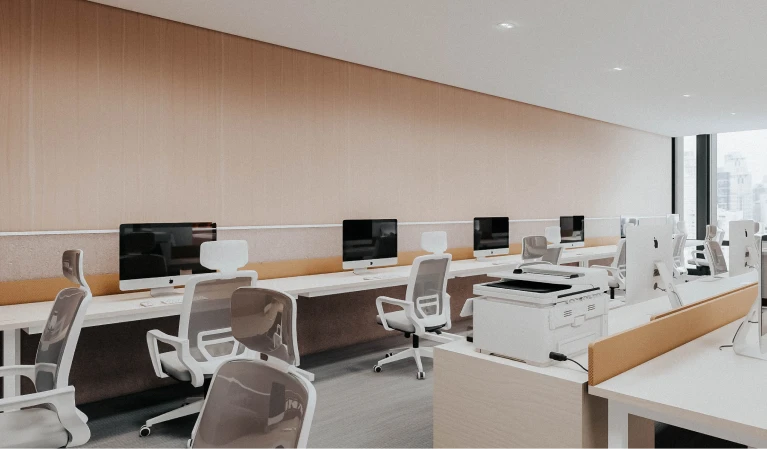
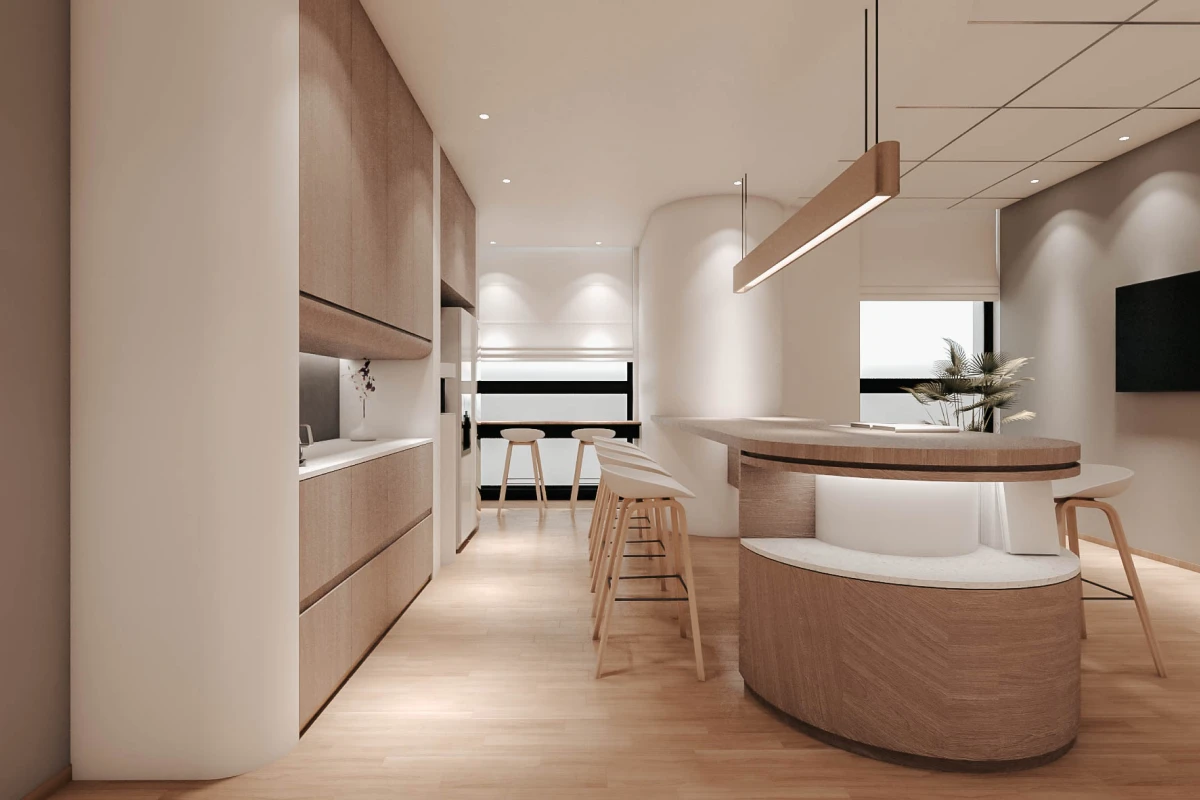
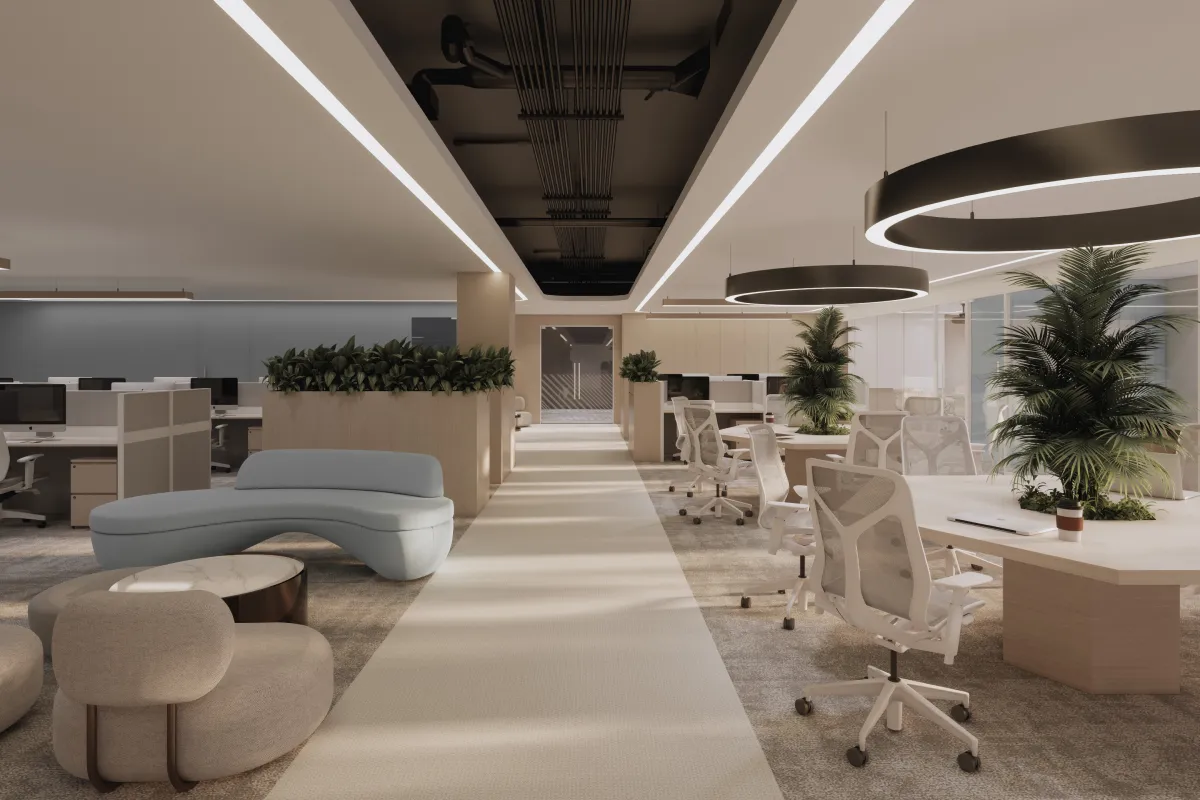
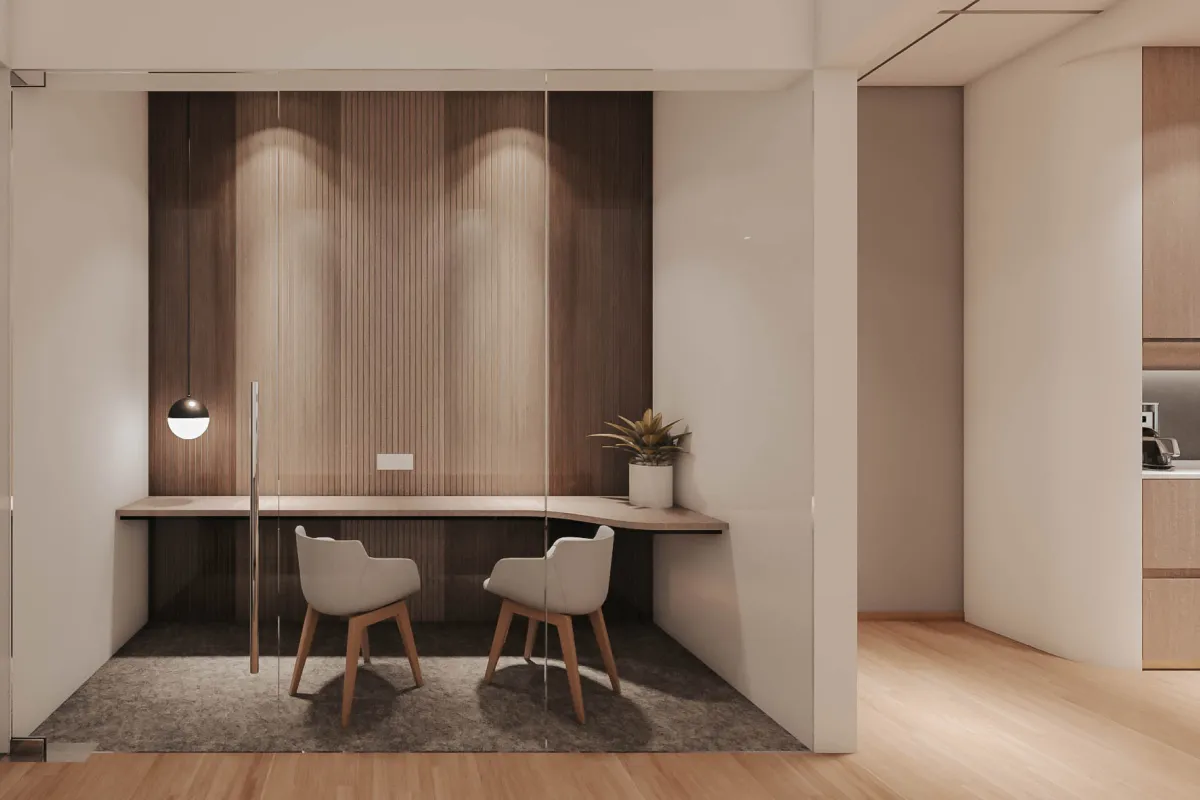
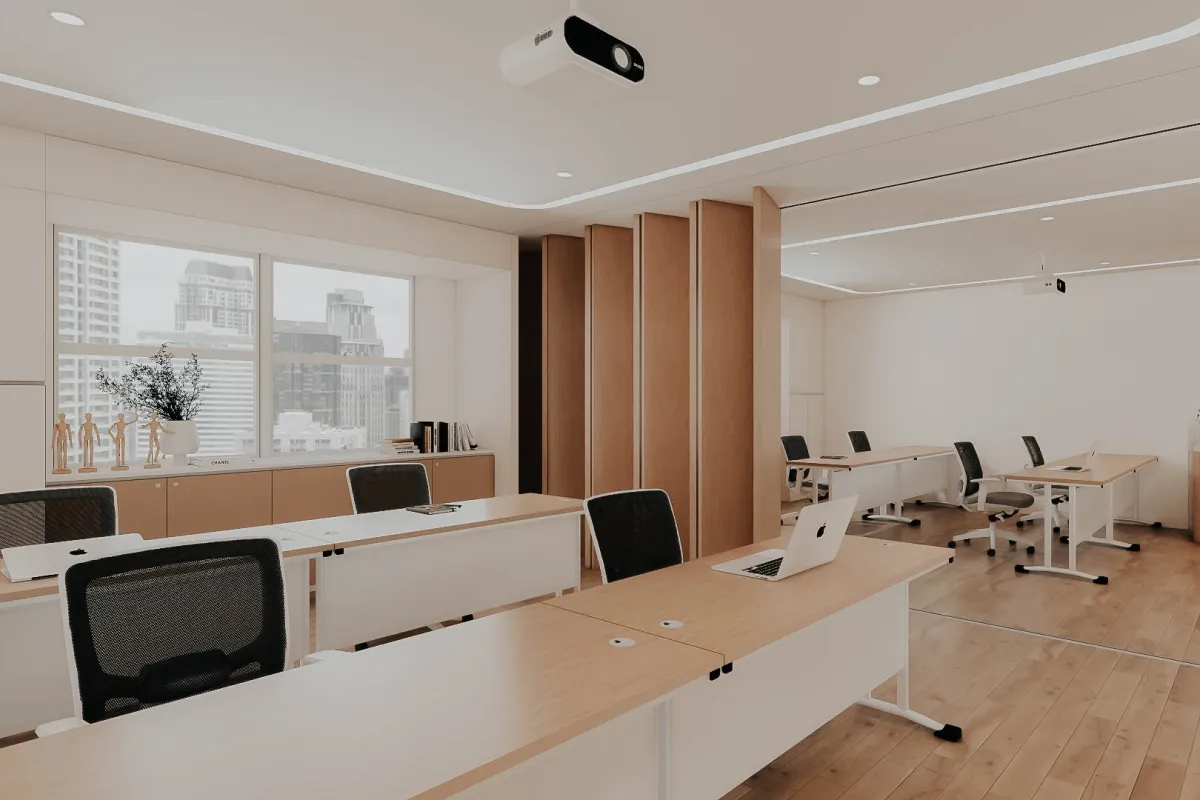
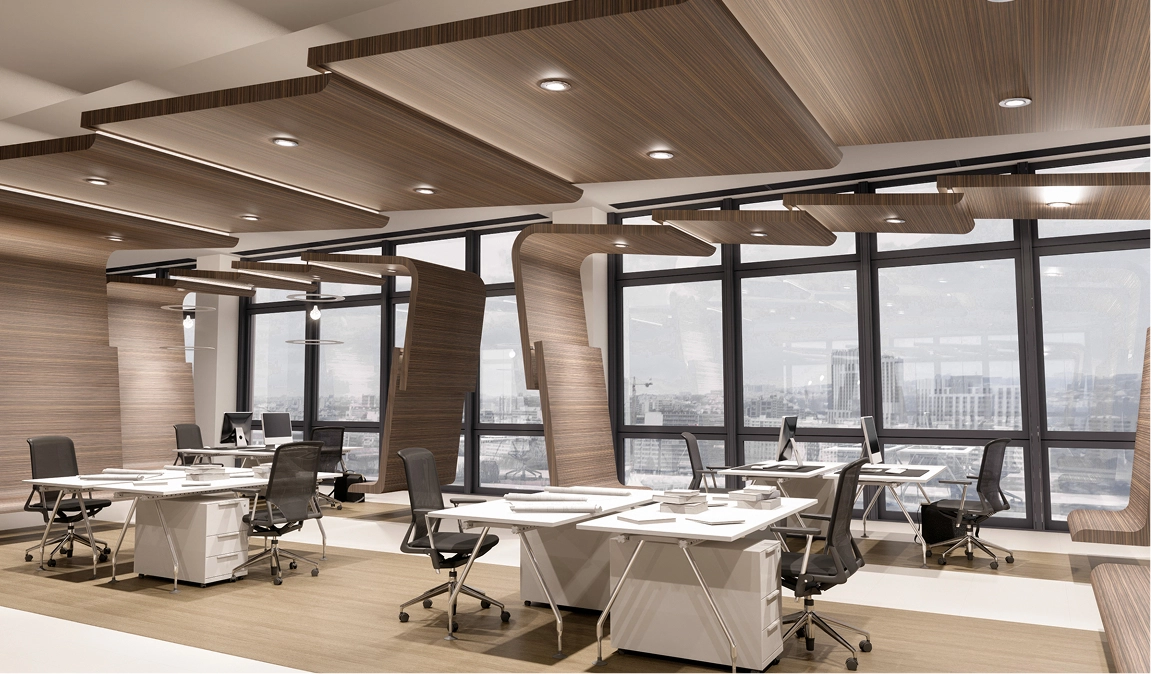
%201.webp)
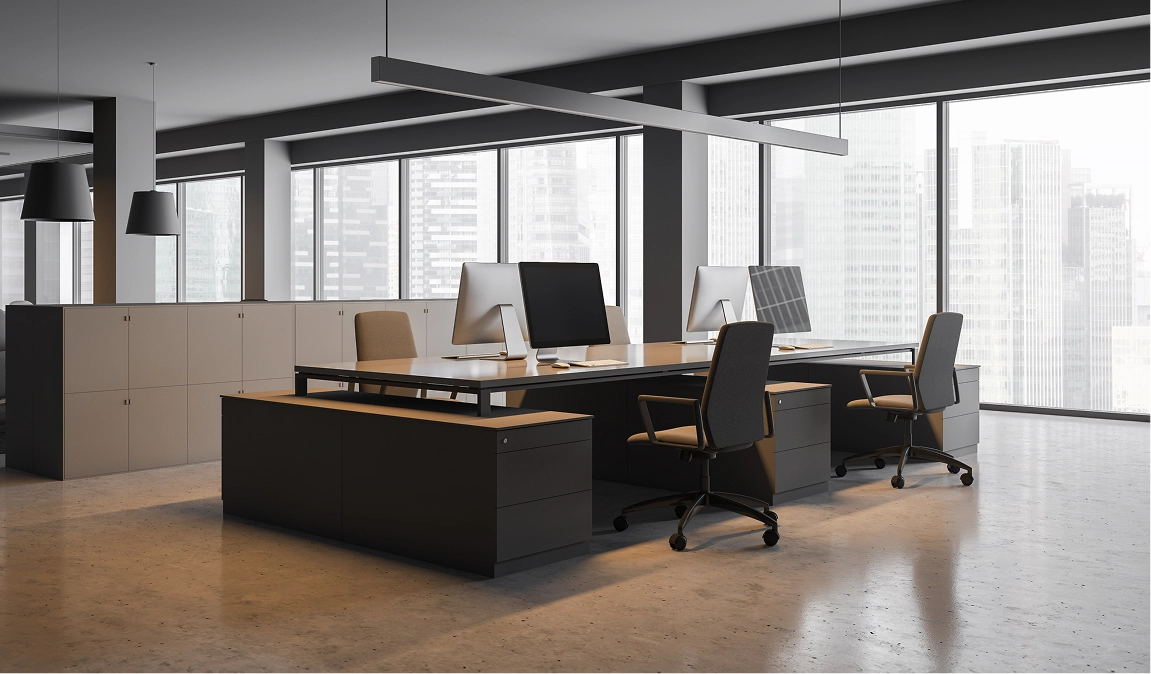
.png)





